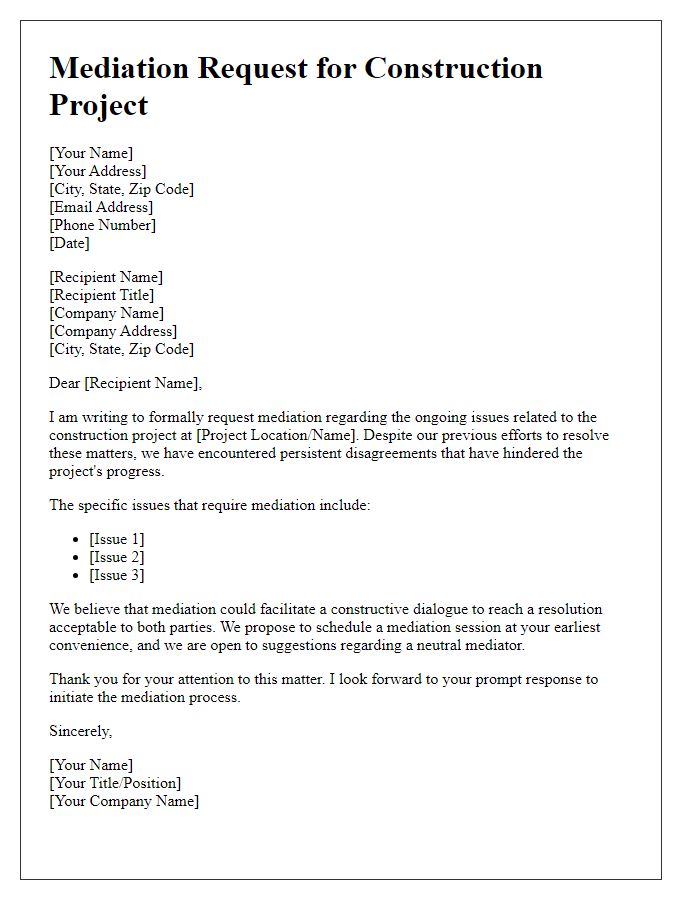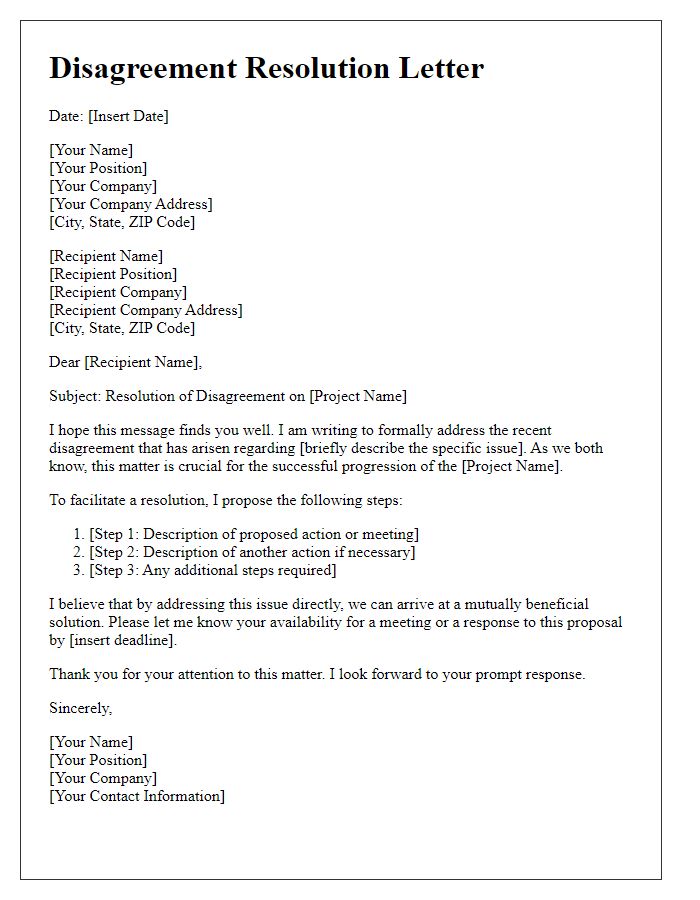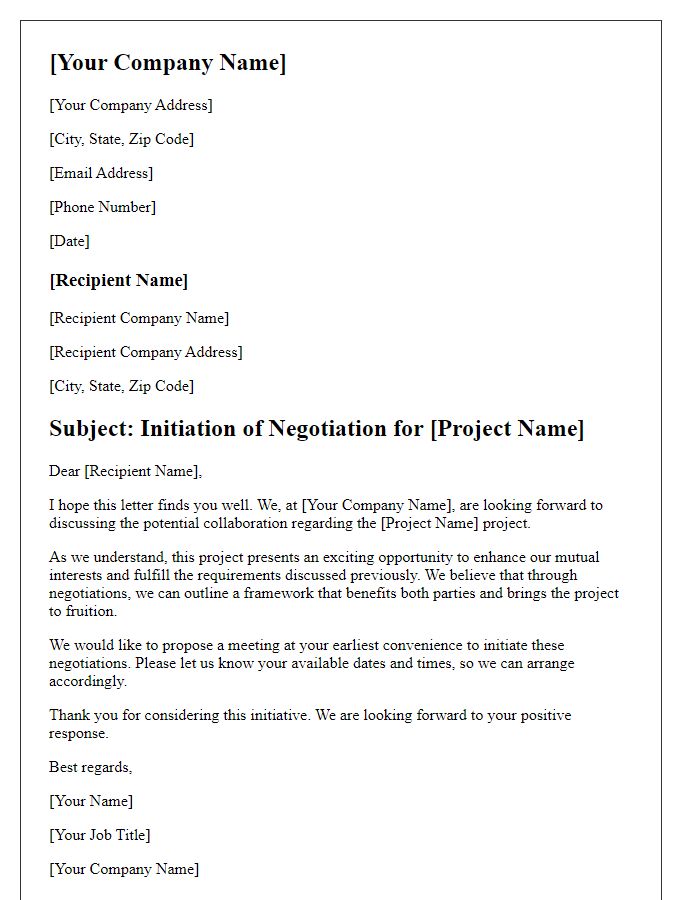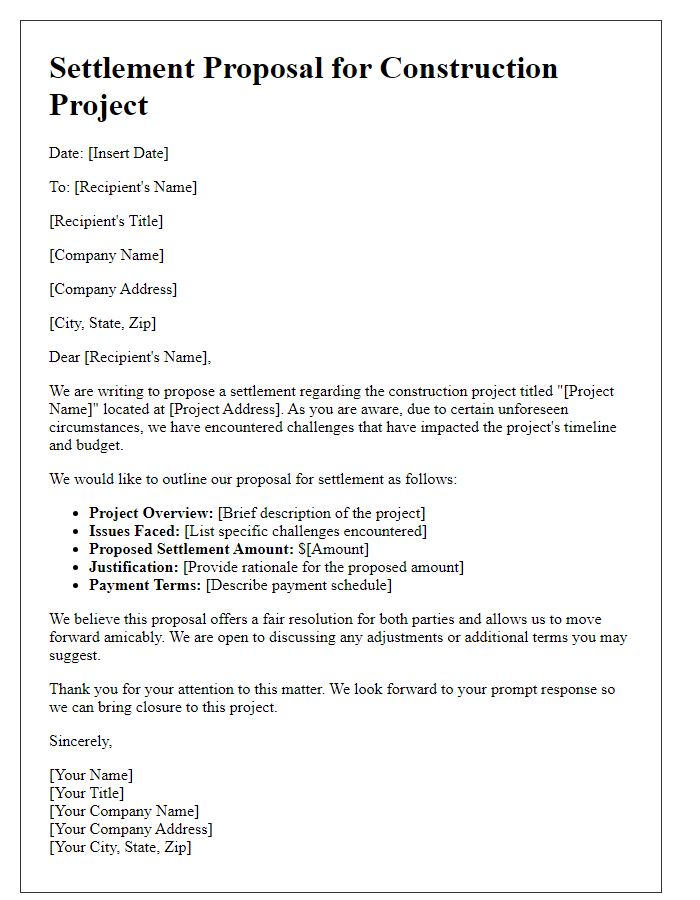Navigating a construction project can sometimes lead to unexpected hurdles, particularly when disputes arise. Whether it's issues with timelines, finances, or quality of work, effective communication is key to resolving these conflicts amicably. In this article, we'll explore a structured letter template that can help you address and resolve disputes in a professional manner. So, join me as we delve into the essential elements of a construction project dispute resolution letter!

Clear identification of parties involved
In the context of a construction project dispute, the clear identification of parties involved plays a crucial role in ensuring effective resolution. Key entities in such disputes typically include the general contractor responsible for overall project execution, subcontractors executing specific tasks, suppliers providing essential materials, and the client or project owner commissioning the construction work. Each party holds a distinct role; for instance, the contractor manages site operations, while subcontractors may focus on electrical or plumbing work. Disputes can arise from contract misunderstandings, delays, or quality concerns. Including full legal names, business addresses, and contact details of all parties fosters clarity and accountability, facilitating a structured approach to addressing issues and agreeing on terms for resolution. Transparent identification promotes communication and negotiation, essential steps in effective dispute resolution in the construction industry.
Detailed description of the dispute and issues
In the context of a construction project at the Oakridge Development Site, disputes have emerged regarding the completion timeline and quality of work delivered by XYZ Construction Inc. Initially scheduled for completion on May 15, 2023, significant delays have been reported, with some phases, such as foundation work and electrical installations, lagging behind by over six weeks. Additionally, the quality of the concrete used in the main structure has raised concerns; independent inspections revealed that the compressive strength of the concrete fell below the industry standard of 30 MPa, measuring only 25 MPa. These issues have not only disrupted the project schedule but also led to potential financial losses estimated at $150,000 due to extended overhead costs and penalties. Furthermore, communication breakdowns have exacerbated the situation, with instances of unresponsiveness from project managers and lack of timely updates regarding progress. The combination of these factors has necessitated immediate attention for dispute resolution to ensure the project proceeds effectively.
Reference to contract terms and clauses
Construction project disputes often arise from misunderstandings related to contract terms and clauses. Precise definitions within the contract, such as scope of work, timelines (e.g., completion dates), and payment schedules, are crucial. Common clauses include the dispute resolution process, often mandating mediation or arbitration as initial steps before legal action. For example, Article 10.2 typically outlines negotiation efforts required prior to initiating formal proceedings. Failure to adhere to these stipulations can lead to prolonged delays and increased costs, emphasizing the importance of detailed documentation and evidence to support claims. Courts, based on jurisdictional standards (e.g., local statutes), may enforce these contractual agreements strictly, making it imperative for all parties involved to be well-acquainted with the stipulated rules.
Proposed resolution or desired outcome
Proposed resolution in construction project dispute resolution often involves financial compensation, timeline adjustments, and clarity in contract stipulations regarding deliverables and quality standards. Financial compensation may include settling outstanding invoices, covering additional costs due to delays, or compensation for damages incurred. Timeline adjustments may necessitate an extension of project deadlines, particularly in light of unforeseen circumstances like severe weather events or material shortages. Clear contract stipulations must delineate responsibilities of contractors, sub-contractors, and suppliers, addressing expectations regarding quality and compliance with local building codes and regulations in specific jurisdictions. The desired outcome is collaborative problem-solving that restores professional relationships and ensures completion of the construction project within realistic and mutually agreed parameters.
Contact information for follow-up discussion
Construction project disputes often arise from contract discrepancies or project delays. Addressing these issues promptly is essential to maintaining project timelines. Key entities involved typically include contractors, subcontractors, project managers, and clients. Contact information should encompass names, phone numbers, email addresses, and roles within the project to facilitate swift communication. Discussing these disputes can lead to resolutions through negotiation, mediation, or arbitration, depending on the contract terms. Emphasizing direct and efficient communication channels is vital for an effective resolution process. Note: When documenting disputes, recording dates, specific issues, and relevant documentation is crucial for clarity and eventual resolution.













Comments